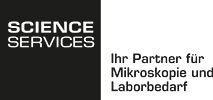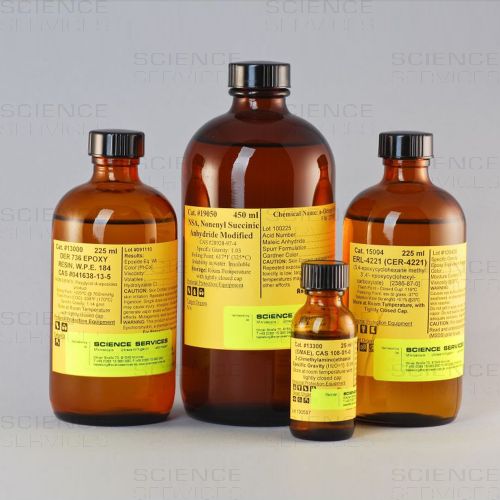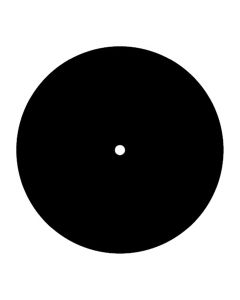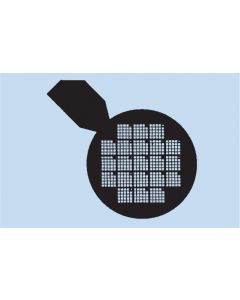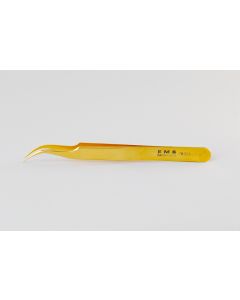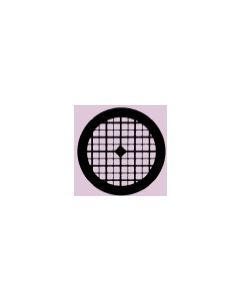Spurr, geringe Viskosität
Sehr gute Infiltration und Penetration von biologischem Gewebe. Geringe Viskosität.
Produktdetails
Beschreibung
Introduction:
Spurr‘s Low Viscosity embedding mixture is recommended because of its excellent penetration qua-lities, which provide good and rapid infiltration of tissues. It is easy to prepare, and mixes rapidly by shaking and swirling. The hardness is adjusted by changing the amount of the flexibilizer, DER 736; the blocks have good trimming and sectioning qualities and the sections are tough under the electron beam. (Grids, without supporting membranes can be used.)
Ingredients:
ERL 4221 - The direct replacement for ERL 4206.
DER 736 - diglycidyl ether of polypropylene glycol, a flexibilizer to control the hardness of the polyme-rized block. It was selected because of its low viscosity: 30-60 cP at 25°C. It has a M.W of 380 and an epoxy equivalent of 175-205.
NSA - nonenyl succinic anhydride, a hardener with a relatively low viscosity of 102.8cP at 25°C, and a M.W. of 227. A minimum exposure to air is recommended to avoid hydrolysis.
DMAE - dimethylaminoethanol (S-1) an accelerator, used because of its low viscosity and results in blocks with less color. In addition, it induces rapid cure when the temperature is elevated to 70°C. It is effective in a very low concentration. (less than 1.0%) The optimum concentration for color transparen-cy is 0.7-0.75%.
| Formulation | See end of Document for special formulations |
| ERL 4221 | 10 g |
| DER 736 | 8g |
| NSA | 25g |
| DMAE | 0.3 g |
| Cure Time at 70°C | 8 hours |
| Pot Life | 3-4 days |
Mixing Instructions:
Add each component in turn to a disposable plastic beaker. An exact weight is recommended, and care must be used in dispensing the final amounts of each component so that no excess is added.
The catalyst (DMAE) should be added last, after gently mixing the three other components.
The complete formula should be mixed thoroughly.
The complete mixture with the hardener can be used immediately for infiltration, and then for embed-ding. Although the mixture can be stored in a disposable syringe, well capped and with no air, in a freezer for several months it is highly recommended that freshly prepared embedding medium always be used. If you choose to store the mixture, it is imperative that you allow it to come to room tempera-ture prior to use to avoid atmospheric water condensation on the resin, which prevent proper polymeri-zation.
Dehydration - Infiltration and Polymerization:
This embedding media is compatible with all dehydrating agents: acetone, dioxane, ethanol, hexyle-neglycol, isopropyl alcohol, propylene oxide, tert-butyl alcohol. The schedule and concentration can be established by the investigator however for a rule of thumb we recommend the following: Dehydration is generally done at room temperature in a graded series of Ethanol starting at 50% then going to 70, 95 and 100% for no less than 20-30 minutes each step. All dehydrating agent must totally be removed during infiltration due to the fact that it will effect curing.
The embedding media is completely compatible with ethanol. Thus, it is not mandatory to have a change to propylene oxide prior to infiltration as is true for other epoxy resin mixtures. If working with plant cells it is recommended to use propylene oxide.
The infiltration (one should employ a specimen rotator) can be started by adding the embedding media to the dehydrating fluid left in the vial with the tissue(1:2) . Swirl the mixture and allow it to stand for 2- 3 hours. Then replace with a 1:1 dehydrating agent/embedding medium, swirl and allow to sit over-night. Replace with a 1:3 dehydrating agent/embedding medium, swirl, and allow it to stand for another 2 to 3 hours. Pour and drain the mixture and add fresh embedding media (100% Spurr). For small specimens, 5-6hours; for large specimens, 5-6 hours followed by overnight. Curing takes 16-24 hours at 60°C. (The mixture can be left in an oven overnight).
E14300 Low Viscosity Embedding Media Kit consist of:
E15004 ERL 4221 - vinyl cyclohexene dioxide - 225ml
E13000 DER 736 - diglycidyl ether polypropylene glycol- 225ml
E19050 NSA - nonenyl succinic anhydride-450ml
E13300 DMAE - dimethylamino ethanol- 25ml
Special Formulations:
For Biopsies from Kidney, Liver, GI, Esophagus
Mixing Directions: ERL 4221 18ml DER 736 14ml NSA 48 ml DMAE 0.6ml
Dehydration: 50%, 70%, 95% ETOH for 20-30 minutes each change2 x 100% ETOH for 30 minutes
Infiltration*: 1 part Spurr to 2 parts ETOH for 3 hours1 TO 1 overnight/over weekend3 to 1 (Spurr to ETOH) 3 hours100% Spurr 6-8 hours
Polymerization: Then Polymerize overnight (12 hour Max) at 70-80 Degrees C*All infiltration Procedures shall be run on a Rotator.
For Biopsies from Muscle, Nerve or Skin
Dehydration: 50%, 70%, 95% ETOH for 20-30 minutes each change2 x 100% ETOH for 30 minutes
Infiltration*: (Spurr/ETOH 100%)1 part Spurr to 2 parts ETOH 24 hours (over weekend)1 TO 1 24 hours (over weekend)3 to 1 (Spurr to ETOH) 24 Hours100% Spurr 24 Hours
Polymerization: Then Polymerize overnight (12 hour Max) at 70-80 Degrees C*All infiltration Procedures shall be run on a Rotator.
References: Spurr, A.R.(1969), J. Ultrastruct. Res. 26,31.
Weitere Informationen
| Basis |
Epoxy
|
|---|---|
| Gebotszeichen |
Augenschutz benutzen

Handschutz benutzen

|
| Signalwort |
Gefahr
|
| Symbol GHS |
GHS02
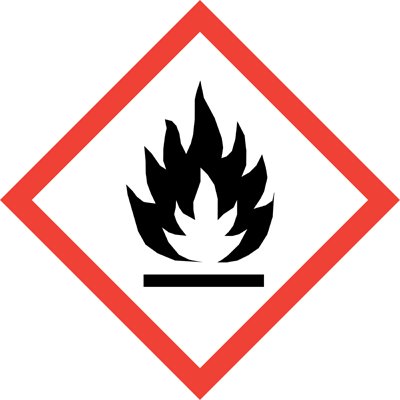
GHS05
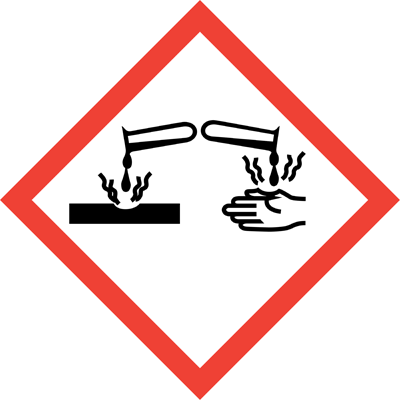
GHS07

|
| Gefahrenhinweise |
H226
H302_H312_H332
H302_H332
H312
H314
H315
H317
H335
|
| Sicherheitshinweise |
P261
P280
P312
P321
P330
P362
P301_312
P303_361_353
P304_340
P305_351_338
P333_313
P405
P501
|
| Bestandteile | 450ml NSA, 225ml ERL 4221, 225ml DER 736, 25ml DMAE |
| Versandklasse |
Gefahrgut LQ
|
| Arbeitsbereich |
Elektronenmikroskopie
|
| SDB (mehrsprachig) | E19050, E15004 |
| SDB (mehrsprachig) | E13000 |
| SDB (mehrsprachig) | E13300 |
